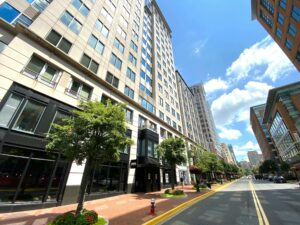
Owning commercial property in Los Angeles comes with opportunity—and a fair share of rulebooks. Whether you’re renovating a retail storefront, converting a warehouse to mixed-use, or developing a new multi-tenant asset, zoning laws will shape what you can and can’t do. The good news? Once you understand the basics (and work with people who live in this world every day), zoning becomes less of a maze and more of an organized map—with some scenic detours, of course.
Start with the Zoning Code: The Official “What’s Allowed” List
Every parcel in Los Angeles is assigned a zoning designation—C2, CM, M1, etc.—and each one dictates how your property can be used. For example, C-zones generally allow for commercial and retail uses, while M-zones are designed for industrial activities. But these categories also have layers: height limits, parking requirements, signage rules, setbacks, and other details that can influence everything from your tenant mix to your building footprint.
Before you draft architectural plans or announce anything to tenants, pull the zoning profile for your parcel through ZIMAS (the City’s zoning lookup tool). It’s free, and it will save you the kind of headache usually reserved for flat-tire days and broken air conditioners.
When Exceptions Make Sense: Conditional Use Permits & Variances
Let’s say you have a great idea for the property—like adding a café to an office lobby or converting a warehouse to creative studios. If the existing zoning doesn’t explicitly permit it, all is not lost. This is where Conditional Use Permits (CUPs) and variances come in.
-
Conditional Use Permits allow certain uses if you agree to operate under specific conditions the City sets.
-
Variances allow you relief from development standards—like setback lines or height limits—when you can prove there’s a practical need.
Both require applications, neighborhood notifications, public hearings, and patience. The timeline can run months, sometimes longer, depending on community feedback. If your project affects parking or traffic, expect extra scrutiny. But when handled correctly, these processes can unlock significant value.
The Role of Planning—And Why It’s Not Just Red Tape
Working with LA City Planning isn’t just a paperwork exercise. The department is actually trying to balance community needs, infrastructure capacity, and long-term land-use strategy. When you treat planners as project partners—not adversaries—you get better results. This means:
-
Preparing clean, complete submittals
-
Bringing credible professionals (architects, land use consultants, property managers)
-
Showing how your project benefits the local area
A well-prepared team can cut down delays by weeks or months—and significantly reduce your stress level.
Common Mistakes to Avoid (Learn These Before You Learn the Hard Way)
-
Assuming “Existing Use = Allowed Use.” If past tenants did something, it doesn’t automatically mean your new plan is legal.
-
Skipping the Parking Analysis. LA loves parking requirements (even when the neighborhood is walkable). Don’t ignore them.
-
Forgetting Environmental Reviews. CEQA can apply in surprising ways—especially if the property is near sensitive areas.
-
Not Checking Building & Safety Requirements. Zoning may say yes, but Building & Safety may still say hold up.
Your Strategic Edge: Smart Planning + Strong Management
The most successful commercial property owners in Los Angeles don’t go it alone. They work with property managers and consultants who deal with zoning every day. This ensures that leasing plans, tenant improvements, and long-term repositioning strategies align with what the City will approve—not just what looks good on paper.
Ready to make sure your property’s potential matches the zoning reality?
Visit CrownCommercialPropertyManagement.com today to get a free quote from CCPM and ensure your commercial asset is being managed strategically, compliantly, and profitably.


